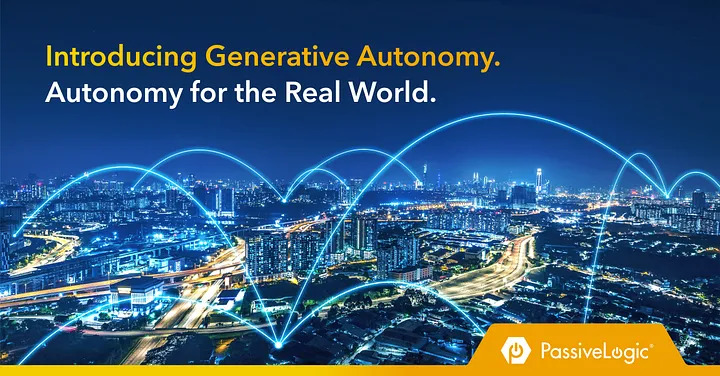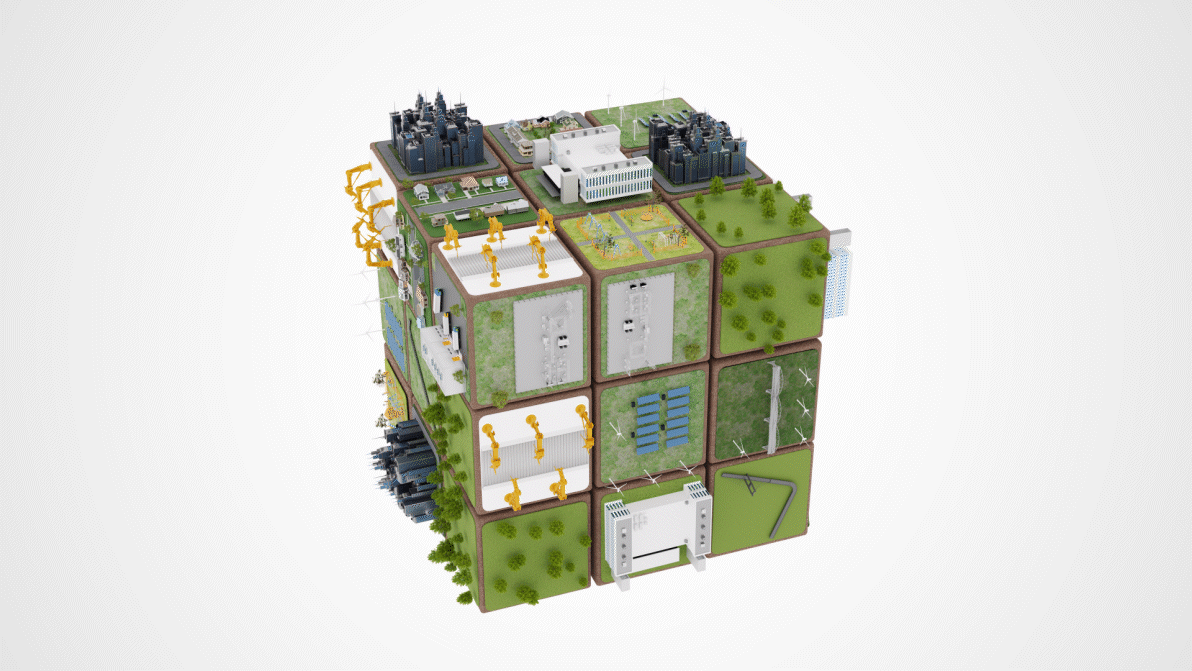
Introducing Generative Autonomy

Our world operates inside of controlled systems, which fall into two distinct but unequal categories: transportation and the built world. The built world encompasses not just buildings but everything that goes on inside them. While the bulk of controlled systems operate within the built world, only cars have received any attention (and funding) from the world of autonomous systems. Yet there are no platforms for autonomy for the built world. Why? Because until now, the built world has been too topologically complex to make autonomous. To make the built world autonomous, you need autonomous systems that are generalized and can work with any set of systems.
During the PassiveLogic 2023 Launch Event, we introduced the future of autonomy. Autonomy is more than single-purpose chatbots and single-purpose operations that require millions of dollars and months to train. True autonomy is flexible, dynamic, and capable of adapting to understand and manage any controlled system in a matter of minutes. True autonomy — by definition — requires generative autonomy.
During the keynote, I dove into generative autonomy and PassiveLogic’s breakthroughs making this groundbreaking technology possible. If you haven’t had the chance to watch the keynote, head to passivelogic.com to watch it.

State of Play. No Real Autonomy Right Now.
With this incredible breakthrough, where does generative autonomy get applied first? The answer might not be obvious — but its application is imperative: It’s buildings. Buildings are the most complex robots in the world; the largest buildings trend towards one million input and output sensors and controllables. Buildings also consume more than 40 percent of our total energy consumption, and 40 percent of that energy is savable through better controls. The complexity and energy-saving opportunities of buildings make them ideal as the first application for generative autonomy.
So, let’s take a step back and look at the current landscape of autonomous systems to understand why buildings require more sophisticated and agile technology than any autonomous system on the market today.
The first industry to jump on autonomous systems was the automotive industry. But cars are actually pretty simple robots, once you get past vision in a chaotic environment. Autonomous cars are controlled by only a few dozen sensors or inputs and manage just three outputs: turning, braking, and acceleration. Once the AI system for one model has been perfected, it can be replicated and placed in car after car. The autonomous system is replicable and can only work in systems designed for it to succeed — but it’s brittle.
And if we look at the next big wave of automation, the chatbots and image generators dominating headlines today are fun, but they are actually pretty simple and only capable of one single task that requires years of training to pull off. They’re flashy, but not that sophisticated — and certainly shouldn’t be confused with AGI.
The real breakthrough in autonomous systems would be a system that would be general purpose and can easily and quickly be built to reflect the unique requirements of any system and work anywhere. That’s what can enable every unique one-off building to become autonomous.
Generative Autonomy. Autonomy for Everyone.
This next-generation AI system is required to enable autonomous buildings. As I said earlier, buildings are the world’s most complex robots, and this complexity renders them what is called in computer science an “intractable problem” — while theoretically solvable, it will never be solved through manual programming and static sequences. Add in the fact that every building is unique, and accounting for all possible building dynamics is nearly impossible. This reality is the root cause of the diverse challenges plaguing buildings today — from painstaking installation and poor system control to limited occupant comfort — leading to the world’s largest source of wasted energy.
Solving building complexity won’t come from point solutions like smart sensors, and solving their efficiency limitations won’t come from new “efficient” equipment installations. Current control platforms are designed to limit complexity because of the intractable nature of building control. Stacking an AI-optimizer on top doesn’t fundamentally solve any of those problems — it’s just another piece of technology to manage.
No one has ever before decided to embrace the inherent complexity of buildings. Until now. PassiveLogic has built the first brain for buildings that understands a building’s complexity and can simultaneously manage all of the systems within.
That means generative autonomy.
Four Breakthroughs. 17 Products. One Solution.
We’ve built the technology for generative autonomy with four key breakthroughs and 17 products that put generative autonomy in your hands:
1. A Complete Ecosystem of Digital Twin Applications
🔍 Quantum Lens
🏢 Building Studio
🦾 Autonomy Studio
⚛️ Quantum Creator
🪪 Quantum Passport
🧭 Quantum Explorer
2. A Breakthrough Platform for Generative Autonomy
🐝 Hive & Hive Mini
🍯 Cell Family
👆 Sense Touch and Sense Nano
3. The First Digital Twin Language for Composable AI
👯♂️ Quantum Digital Twin
🤖 Quantum API
4. The World’s Fastest AI-Language and Tool Chain
🪽🔥 Differentiable Swift Compiler
Over the coming weeks, I’ll be sharing blogs that go deeper into these breakthroughs and our products, sharing additional insights and conversations with building controls, real estate, and deep-learning technology leaders as they discuss how PassiveLogic’s technology will transform their industries.
People sometimes say that we’re like 10 start-ups in one. They’re absolutely right. You can’t transform the built world with point solutions alone.
Follow me on LinkedIn. Join our waitlist for our software product release in December 2023.
Follow PassiveLogic on LinkedIn and YouTube to stay caught up on the latest news.